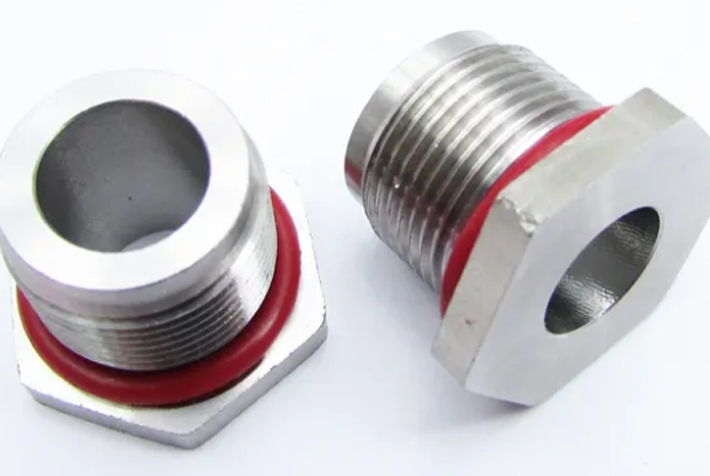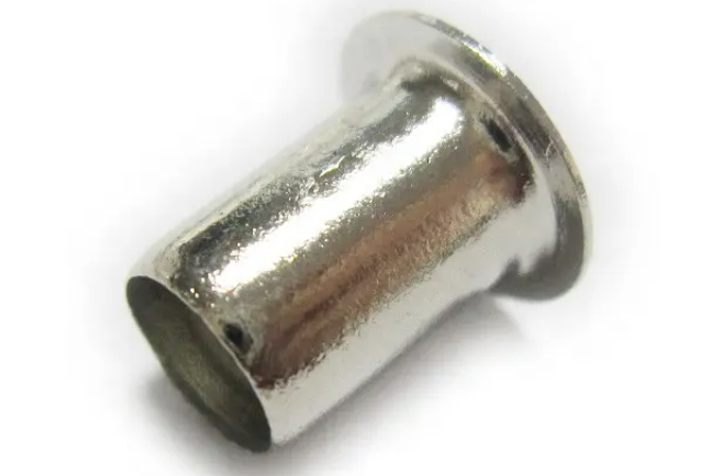
Inspección material: El proceso de control de calidad comienza con la inspección de las materias primas entrantes. Los materiales utilizados para los bujes/manguitos deben cumplir con las normas y requisitos especificados. Los métodos de prueba de materiales pueden incluir análisis de composición química, pruebas de dureza y verificación dimensional.
Precisión dimensional: Los bujes/manguitos deben tener dimensiones precisas para garantizar un ajuste y una funcionalidad adecuados. Las medidas de control de calidad implican inspecciones dimensionales utilizando herramientas y equipos calibrados, como calibradores, micrómetros y medidores, para verificar los diámetros internos y externos, la longitud y el grosor de la pared.
Calidad de la superficie: el acabado de la superficie de los casquillos/mangas es fundamental para un funcionamiento suave y una fricción reducida. Los controles de control de calidad implican inspeccionar visualmente las superficies en busca de defectos como rebabas, arañazos o irregularidades. Las mediciones de rugosidad de la superficie también se pueden realizar utilizando herramientas como perfilómetros.
Verificación de tolerancia: Los casquillos/manguitos tienen tolerancias específicas que definen variaciones aceptables en las dimensiones. Los procedimientos de control de calidad implican verificar los componentes fabricados con estas tolerancias para garantizar que se encuentran dentro de los límites especificados.
Propiedades MECÁNICAS: Dependiendo de la aplicación de los requisitos, se deben evaluar ciertas propiedades mecánicas de los casquillos/manguitos, como la dureza, la resistencia a la tracción y el alargamiento. Estas propiedades se pueden evaluar mediante métodos de prueba estandarizados, que incluyen pruebas de dureza (por ejemplo, o Brinell Rockwell) y pruebas de tracción.
Material | Hierro, acero inoxidable, latón, cobre, acero galvanizado, titanio, aluminio, etc. |
Tratamiento superficial | Zinc/níquel/Estaño/Ag-chapado/Au-chapado, etc. |
Tipo | Piezas no estándar de alta precisión (Servicio OEM) |
Proceso | Estampado/punzonado/prensado, mecanizado CNC/torneado/fresado, dibujo profundo y otros procesos. |
Certificado | IATF16949 2016;I SO9001 2015; ISO14001:2015;RoHS & REACH, etc. |
Uso | Termostato de automoción/coche, interruptor, calefacción eléctrica, aeroespacial, nueva energía, etc. |
Los casquillos, también conocidos como manguitos, son componentes cilíndricos que se utilizan en diversas aplicaciones para proporcionar soporte, reducir la fricción y absorber golpes o vibraciones. Las características específicas del producto de los casquillos/manguitos pueden variar según el uso previsto y los materiales de los que están hechos.
Resistencia al desgaste:Los casquillos/manguitos pueden tener características específicas para mejorar su resistencia al desgaste, especialmente en aplicaciones de alta carga o alta velocidad. Estas características pueden incluir revestimientos de superficies especiales, tratamiento térmico o el uso de materiales con propiedades inherentes resistentes al desgaste.
Amortiguación y absorción de Choque:Algunos casquillos/manguitos están diseñados para absorber golpes o vibraciones, reduciendo la transmisión de fuerzas de impacto. Pueden tener propiedades como alta elasticidad, flexibilidad o la capacidad de deformarse bajo carga, proporcionando características de amortiguación.
Resistencia a la corrosión:Dependiendo de la aplicación y el entorno operativo, los casquillos/manguitos pueden requerir propiedades resistentes a la corrosión. Esto es particularmente importante cuando se expone a humedad, productos químicos o temperaturas extremas. Elegir el material apropiado o aplicar revestimientos protectores puede mejorar la resistencia a la corrosión de los casquillos.
Características específicas de la aplicación:Algunos bujes/manguitos pueden tener características adicionales específicas para ciertas aplicaciones. Por ejemplo, los casquillos con bridas tienen una pestaña incorporada que proporciona estabilidad adicional o puntos de montaje.
Al seleccionar bujes/manguitos, considere los requisitos específicos de su aplicación, como capacidad de carga, velocidad, condiciones de funcionamiento y factores ambientales. Comprender las características del producto y su idoneidad para su uso previsto ayudará a garantizar un rendimiento óptimo y longevidad.
Los casquillos son componentes cilíndricos simples diseñados para reducir la fricción entre un eje y estructuras externas, proporcionando soporte y guía. Se encuentran comúnmente en muebles, sistemas de suspensión automotriz, etc., están diseñados para simplificar y pueden ser sólidos o contar con ranuras de lubricación integradas para disminuir la fricción y mejorar la durabilidad.

Los rodamientos, por otro lado, son componentes mecánicos más complejos con elementos de rodadura como bolas o rodillos. Reducen la fricción, ofrecen una mayor capacidad de carga y proporcionan un soporte de alta precisión. Ampliamente utilizado en motores, motores, ejes de rueda, etc., los rodamientos vienen en varios diseños para satisfacer las demandas de aplicaciones de alta velocidad y alta carga. Como proveedor de fabricación de hardware, HHC se dedica a entregar bujes y rodamientos de alta calidad para satisfacer las diversas necesidades de diseño y aplicación en diferentes industrias, lo que contribuye al desarrollo en varios campos.
Un casquillo es un componente crítico que reduce la fricción entre un eje y estructuras externas, y su rendimiento está determinado por los materiales elegidos. Aquí hay una guía sobre los tipos de materiales de buje y las técnicas de procesamiento adecuadas para cada uno:

Latón:
Características: ExhIbra buena conductividad térmica y resistencia a la corrosión.
Técnicas de procesamiento: el latón se procesa comúnmente utilizando técnicas mecánicas como torneado, fresado y perforación para lograr las formas y dimensiones deseadas.
Bronce:
Características: Posee mayor dureza y resistencia al desgaste.
Técnicas de procesamiento: el bronce a menudo se procesa mediante fundición de precisión, extrusión en frío u otras técnicas para fabricar casquillos de formas complejas.
Polímeros:
Características: Conocido por La autolubricación y resistencia a la corrosión.
Técnicas de procesamiento: Los casquillos de polímero se fabrican típicamente usando moldeo por inyección, donde el polímero fundido se inyecta en moldes para formar las formas deseadas.

Revestimientos de metal:
Características: Proporciona resistencia al desgaste superior y fuerza.
Técnicas de procesamiento: los bujes de acero a menudo se recubren mediante procesos como galvanización por inmersión en caliente o galvanoplastia para lograr un recubrimiento metálico protector en la superficie.


